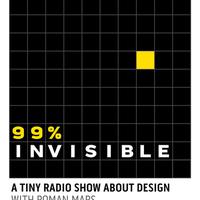99% Invisible-08- 99% Free Parking
Roman Mars (RM): This is 99% Invisible. I'm Roman Mars. RM: 99% of car trips in the US end in free parking space. But if there's one thing that urban planning and parking guru Donald Shoup can understand, its that so-called “free parking” is never free. Donald Shoup (DS): Every time you go to a grocery store or a movie theater or restaurant, everthing you do has a bit of the cost of parking imbedded in it.
RM: Everything except one thing.
DS: Except in your role as driver.
RM: In the suburban environment, free parking is a given. Having a massive tarmac that could comfortably fit a fleet of cars and also land a 747 is a huge part of the suburban landscape. But even in urban areas, where subsidizing paid parking spaces, because the rent on them is below market value. We also collectively pay for parking with time- crusing for parking wastes time.
DS: We've all done it. You go to a place, you see the price of parking, maybe $5 an hour. If it's $.50 an hour on the street, well you'll circle the block until you see somebody going out. RM: Yeah, because parking in a lot is for quitters.
DS: If you do it, everyone else is probably doing it and it all adds up.
RM. Donald Shoup studied the amount of cruising for parking in a fifteen block business district near UCLA, and found that in a year, the vehicle miles traveled, crusing for parking, is almost a million miles.
DS: That's four trips to the moon! Or thirty-six trips around the earth!
RM: Cruising for parking and double-parking slows public transit, it endangers bicylers and pedestrians, and that is happening everywhere.
DS: Nobody has counted the cost of all this mismanagement for a car parking supply.
RM: But San Francisco is looking to be the first major city to manage parking well.
Jay Primus (JP): My name is Jay Primus, I'm the manager of SFpark for the San Franciscso MTA. RM: The new SFpark project uses censors and networked meters to dynamically adjust parking prices over time. The key ingredient is the sensor, which send back data about whether or not a car is actually there.
JP: For the first time, we're going to know what's happening on the street. RM: And with that sensor data, the parking authority starts adjusting. The censors give real-time data back to headquarters and the new pricing is callibrated for the next month. It's demand-responsive pricing. Different times of the day may go up in price, and meters in less-traffic neighborhoods may go down to entice people to park there and walk a little farther. But this isn't just about parking. SFpark is about making a better-designed city.
JP: Lots of cities these days are interested in reducing greenhouse gas emissions and conjestion. This is the first time that any city has tested out a parking-based approach to congestion management. That's good for people who drive, but it's really important for peope who were on the bus and were just trying to get home from work, so that the bus is much faster and more reliable. RM: The goal is to have constant parking availability. One open space for every block, so that people get in a space faster and aren't circling the block in their toxin-spewing death machines. And it's not just street parking. Pricing in the city-owned garages will also be dynamically adjusted too.
JP: There's no relation between the price of parking on-street at meters and parking in a lot or garage. In fact, it's usually more expensive to park in a parking lot or garage rather than at the meter. And that's just the opposite of how it should be. The plan is change that relationship, make it cheaper to park in the lots and garages to attract more people to just go straight to those lots and garages. Keeping those on-street spaces available for those who really value them.
RM: The thing that's been getting the most press about SFpark is all the data about parking availability that will be accessible by the public and the image of some tech-saavy superuser who is constantly checking their iphone to find a parking space instead of watching where they're driving, which, if you picture it for a second, is terrifying and would create more problems than it solves. But I think this is the wrong image. If successful, and it's a big “if,” and the market sets the right value for a parking space, you will never look for parking with your iphone, again, because the goal is one open space per block, meaning there will always be parking available. There is no searching. The thing you use your iphone for is finding out how much it will cost before leaving the house. Where you can decide then if it's better to walk or ride the bus instead of drive. The key is that you don't have to know anything to have an easier time parking. Like the best design, it only works if you don't have to work to make it work. That made sense, right?
RM: 99% Invisible is produced by me, Roman Mars, with support from Lunar. It's a project of KALW, the American Institute of Architects in San Francisco, and the Center for Architecture and Design. Find out more at 99percentinvisible.org

